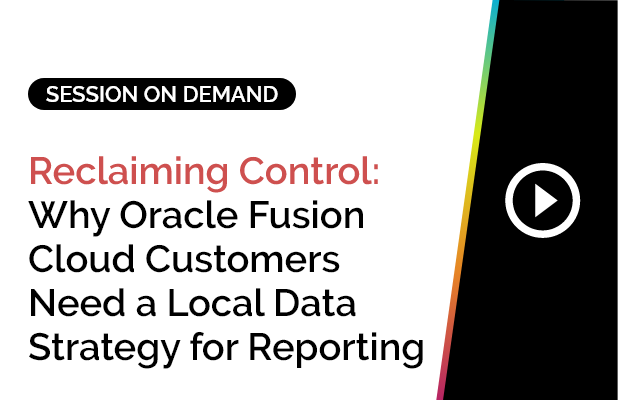It was the summer of 1994, I was sitting in front of a black screen, staring at one of the early text-based browsers and thinking to myself: “This will never catch on.” Luckily, I’ve made better decisions since then.
One of the most underrated innovations of the early internet, in my opinion, was the stop button. When using Mosaic, you had to sit and watch a page of mostly text and a few hyperlinks appear slowly, wishing you had searched for something better. Then Netscape arrived, and everything changed. Suddenly, instead of being stuck on a path, you could break free and jump somewhere else.
Today, it would be like being locked in an AI conversation you couldn’t escape. The stop button was, to me, the smallest yet most revolutionary invention of the internet age.
The lesson? IT evolves. The most important innovations are not always the obvious ones. I still search for my own “stop button” moment, though I’ve had plenty of product ideas over the years, the best innovations always come from customers.
The Versions Lesson
A few years later, I found myself supporting Oracle Forms for a major mobile company. For 18 months, we hadn’t received a single support call. That streak ended when a colleague was asked to deliver an enhancement.
They followed the development team’s procedures exactly. But once the change went live, new phone numbers could no longer be generated.
With no access to production, I sent over a debug version. Nothing in the logs matched the code. On the bus home that Friday, one word kept circling in my head: versions.
Sure enough, development and UAT weren’t in sync, but production matched perfectly. The development team had performed an emergency release directly into production, bypassing UAT entirely. They hadn’t told us, and when support later applied the enhancement, it accidentally reintroduced a bug.
Three weeks later, after simply recompiling the correct objects (technically without changing anything), the issue was fixed. That experience taught me persistence, the importance of looking beyond the obvious, and above all the value of version control. Whenever something goes wrong, it’s almost always due to a change.
The Change Management Trap
At another company, a fleet of PCs suddenly became painfully slow. They were replaced—yet the same issue persisted. The real problem was eventually uncovered: in another country, routers had been updated with antivirus software that blocked all packets from this specific operating system.
The change itself was necessary, but it hadn’t been properly planned, tested, or communicated. Either that, or the person buying the PCs hadn’t checked the change log. The lesson? Change is essential, but it must be managed.
The Trigger Mystery
One night, after work drinks, a colleague ranted about a strange “mutating table” error. Today, I could type that into an AI tool and immediately discover that the cause is an Insert, Update, or Delete inside a trigger.
Back then, without AI, such errors were obscure. Fortunately, my colleague’s sister worked at Oracle. She happened to ask, “Have you checked for triggers?” Sure enough, some digging revealed that a contractor had quietly added a trigger without telling anyone—or checking it into version control.
These days, with tools like Jira, Zendesk, QA teams, and automated patching, many of those problems are easier to avoid. Perhaps IT stories will become less amusing if things just work.
The Lighter Side of IT
Not all challenges were so serious. At one office, we connected via a microwave link. Everything was fine until seagulls flew past and dropped the network.
When it switched over to the backup ISDN, the connection slowed so much that typing a single character took one or two seconds to appear on screen. Between the birds and the ISDN, the only sensible option was a cup of tea.
On another occasion, I was abroad where a telecom company refused to install a network upgrade until the outside temperature rose above freezing. The ground was too hard to dig the one-kilometre trench.
Thankfully, modern networks are full fibre in most places, making us less vulnerable to seagulls and ice.
Looking Ahead
At SplashBI, we’ve tried to carry forward these lessons. In version 6, for example, you’ll be able to save and manage drafts before publishing. Version history will be maintained, so nothing is lost.
We’ve also incorporated new AI innovations. Just as I can now get answers faster, your KPIs will come with summaries, outlier detection, and recommendations.
Maybe, with these innovations, you’ll get to enjoy your evening out—without chasing down answers on a bus ride—and perhaps discover your own “stop button” moment.
The summer of 2025 has just passed, and here I am sitting in front of another screen, this time with multiple colours…

Julian Sweet
Finance Solutions Manager, SplashBI
Julian Sweet, our Finance Solutions Manager, has been a dedicated professional in Oracle EBS since 1998, contributing his expertise across Europe, including a 7-year stint in Belgium. Over the last 4 years, he transitioned into roles with software vendors, specializing in professional services and Finance Solutions. Julian embraces new challenges, learning to snowboard at 30, windsurf at 40, and diving into SplashBI in his 50s. His story reflects a commitment to continual growth and a passion for embracing new experiences.













